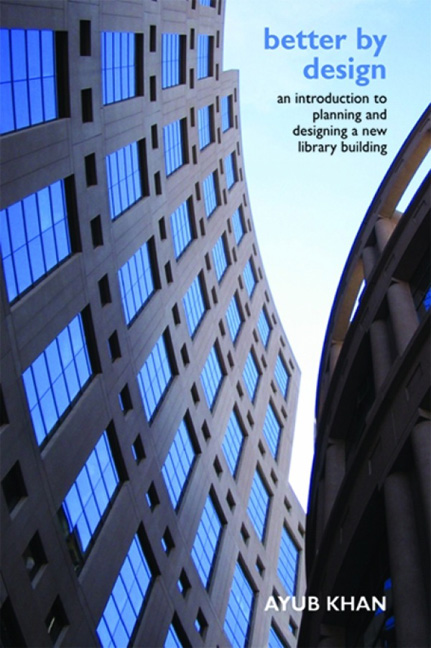Book contents
- Frontmatter
- Dedication
- Contents
- Lists of figures and tables
- Preface
- Acknowledgements
- Abbreviations and technical terms
- 1 Introduction
- 2 21st-century libraries
- 3 Developing a business case
- 4 Project management
- 5 The design/project team
- 6 Selecting an architect
- 7 Partnership and community engagement
- 8 The design brief
- 9 Design quality
- 10 Space planning and access
- 11 Occupancy and post-occupancy evaluation
- 12 Building libraries for the future – a summary
- Bibliography and further reading
- Appendices
- Index
- Miscellaneous Endmatter
- Miscellaneous Endmatter
- Miscellaneous Endmatter
- Miscellaneous Endmatter
12 - Building libraries for the future – a summary
Published online by Cambridge University Press: 08 June 2018
- Frontmatter
- Dedication
- Contents
- Lists of figures and tables
- Preface
- Acknowledgements
- Abbreviations and technical terms
- 1 Introduction
- 2 21st-century libraries
- 3 Developing a business case
- 4 Project management
- 5 The design/project team
- 6 Selecting an architect
- 7 Partnership and community engagement
- 8 The design brief
- 9 Design quality
- 10 Space planning and access
- 11 Occupancy and post-occupancy evaluation
- 12 Building libraries for the future – a summary
- Bibliography and further reading
- Appendices
- Index
- Miscellaneous Endmatter
- Miscellaneous Endmatter
- Miscellaneous Endmatter
- Miscellaneous Endmatter
Summary
The physical library is undergoing a major transformation from collectioncentric to user-focused space, in line with changes in society and a rapid pace of technological development. Within the broader framework of a knowledge society, libraries are shifting in focus from collections to connections and away from an emphasis on storage and access, although the priority given to each will depend on the mission, culture and aims of the library service.
Any new library should recognize the importance of people, books, ICT and the complex and dynamic relationships between them. Skilful architects and expert planners will strike a clearer balance between creating functional and inspiring buildings with exciting architectural features and enjoyable internal spaces.
Any library or information professional practitioner who is in the position of managing the refurbishment or new building of a library should grasp this challenge for the opportunities it offers to see through an exciting new development for the parent institution, be it a school, university or community facility.
The building programme must encompass a business case, clear parameters for the management of the project, close working from the outset with a design team, whose members, particularly the architect, share the vision for the project, and a robust design brief. Engagement with the whole community from the pre-planning stage through to the opening of the new building and beyond will ensure a sense of ownership in that community and added value to the services offered as well as appropriate take-up of the new facilities.
The members of the project management team will have to negotiate unforeseen changes, however careful and considered their planning, and this will necessitate a flexible, open approach to the exterior and interior design of the building. Even after opening, the team will need to make changes as staff and users adapt to their new surroundings.
The future of the library as a physical ‘place’ has been a matter of considerable debate in recent years. Despite some hasty predictions about the death of libraries and growth of virtual worlds, libraries continue to be created around the world, often, as it happens, with growing printed collections as well as exhibition and meeting spaces. Rather than being replaced by ICT, libraries have welcomed the technology, which has contributed to their becoming vibrant and relevant centres of culture, learning and community.
Information
- Type
- Chapter
- Information
- Better by Designan introduction to planning and designing a new library building, pp. 143 - 146Publisher: FacetPrint publication year: 2008
